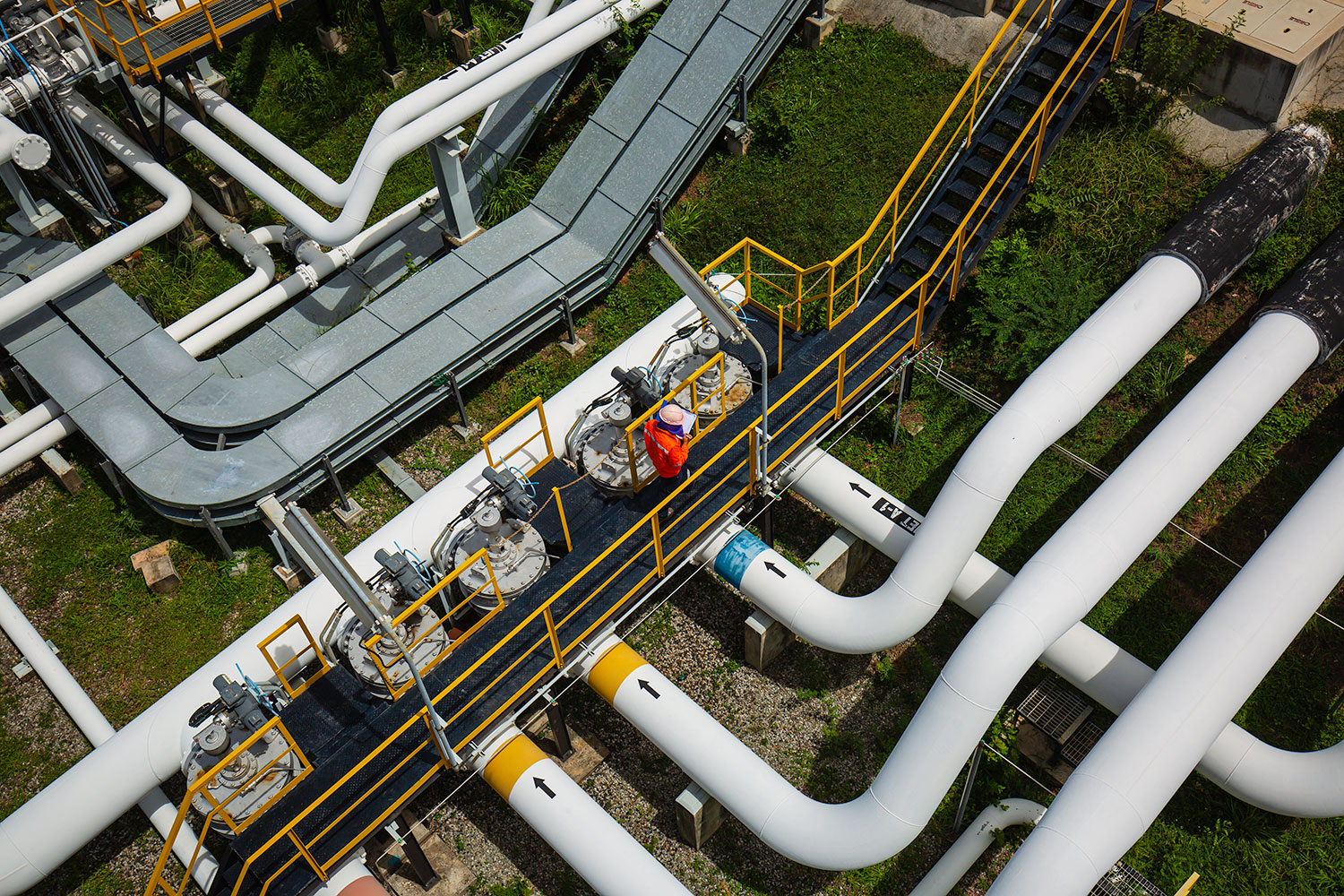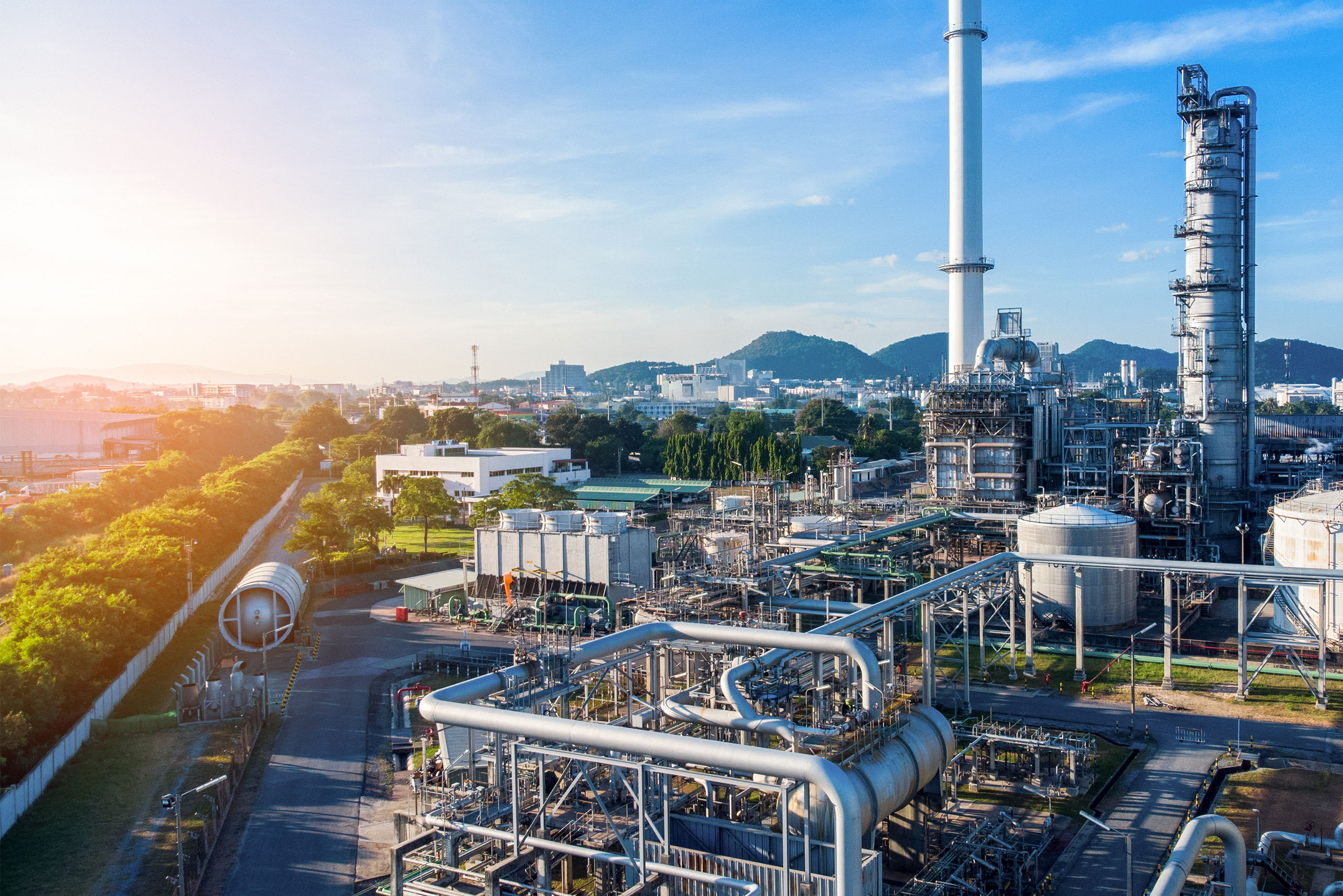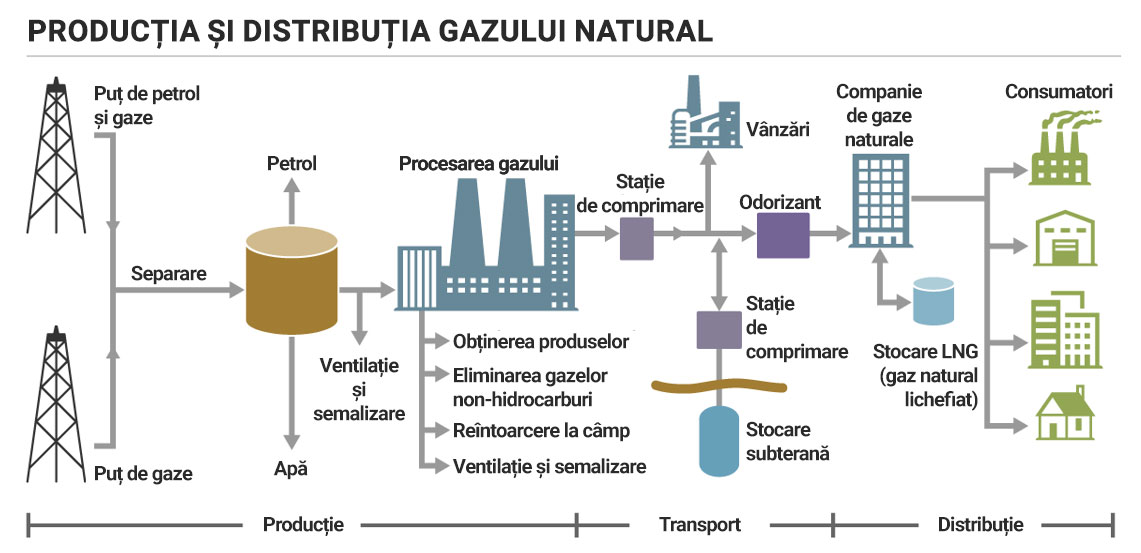Natural resources are valued when they are exploited and used by the population and economic agents. The oil and gas industry makes natural hydrocarbon resources available to citizens after refining and processing. The field-to-consumer route passes through several types of companies, grouped into 3 segments, usually referred to as 'upstream', 'downstream' and 'midstream'. "Upstream" translates literally as "upstream", "downstream" as "downstream", and "midstream" can be approximated as "middlestream". These intuitive terms indicate a company's position in the oil or gas value chain. In this article, we describe the 3 segments and some of the major challenges they face in the current period.
First, we need to answer the question "Why is this segmentation necessary"? The oil and gas field has become increasingly complex over time, so company specialisation has come naturally. It would be very difficult for one company to cover all 3 segments, given the complexity of the requirements, the strategic importance and the size of the capital that would need to be involved.
The 3 sectors - in brief
Upstream sector refers to the exploration and production of crude oil and natural gas and includes those companies that explore for and extract oil or gas from onshore or offshore geological deposits. Among the most important actions in this sector are exploration, i.e. the actual determination of the existence of resources, and production - the exploitation of natural reservoirs.
Downstream sector includes companies engaged in the refining, marketing and sale of petroleum products or natural gas. Oil is refined and processed into products such as gasoline, diesel, motor oil, tar, plastics. Natural gas is processed and sold directly, may be liquefied or used as a raw material for fertiliser. Filling stations are also part of the downstream sector.
Midstream sector is the intermediate sector between upstream and downstream, mainly involving the purification, transportation and storage of crude oil and natural gas. Once resources are extracted from the ground, they are transported via pipelines, tankers, wagons, ships to refining or storage facilities.
UPSTREAM SECTOR. HERE ARE THE RESOURCES.
A company specialising in the exploration and extraction of oil and gas from onshore or offshore deposits is in the upstream sector.
EXPLORATION
Exploration operations are carried out with the help of geologists, who search for commercially valuable deposits of oil and/or natural gas. Romania, for example, is in the fortunate position of having relatively recently discovered deposits both in the ground, such as Caragele, and in the sea.
PRODUCTION ITSELF. PRODUCTION METHODS
Oil and natural gas are found in sedimentary reservoirs; access to these reservoirs is most often achieved by vertical drilling to allow the gas to come to the surface where it is collected, processed, transported, etc.
Another method of drilling is hydraulic fracturing, also called "fracking". This involves introducing fluids (generally made up of sand, water, plus special chemicals) at high pressure into the wellbore. Hydraulic fracturing is carried out at a depth of more than 1 km below the water table.

USE OF DEPLETED DEPOSITS
CCUS (carbon capture utilisation and storage) technology is gaining ground across the globe as it allows carbon-intensive industries to decarbonise by capturing carbon dioxide and storing it in depleted reservoirs. The upstream industry has the knowledge, human resources and experience to successfully deploy this type of project, which is particularly important for achieving climate targets.
Current challenges of the upstream sector:
Among main challenges recorded by companies in the upstream sector include overcharging, decarbonisation and changing business models.
In many countries, there are phenomena such as overcharging or price caps to limit the financial pressure on governments. The oil and gas industry, like the economy as a whole, needs predictability in taxation and a fair approach to allow it to grow. Ț
In the context of climate targets, upstream companies need to demonstrate emission reductions, and this requires investment in measurement, monitoring and actual abatement, but also a deep-dive approach through electrification and connecting with renewable technologies.
The change in business models is triggered by the global energy crisis, where Russia is no longer a supplier for many countries. Thus, there is a new price dynamic, a focus on increasing domestic production (nationally, but also for the EU) and maintaining the use of natural gas under the particular conditions of the energy transition. Thus, upstream companies are considering the development of CCUS projects, but also the development of blue hydrogen production.
DOWNSTREAM SECTOR. POINT OF CONTACT WITH FINAL BENEFICIARIES
Downstream sector comprises a wide range of companies engaged in the refining, marketing and sale of petroleum products.
Refining is a complex process to convert crude oil, unusable in its natural state, into petroleum products used to heat homes, fuel vehicles and make petrochemical plastics.
Marketing is an instrument for the trade of refined petroleum products to businesses and public or industrial consumers. Sales of natural gas are aimed at industrial consumers, electricity suppliers and residential and commercial heating establishments.
Current challenges for the downstream sector: global price volatility, which can affect profitability, investments, etc. One of the main drivers of volatility is the crisis in Ukraine, which has led to sudden price changes around the world. Also, national regulations on climate targets increase the need for major investments in technology and digitalisation to decarbonise the sector and meet environmental requirements. For the downstream gas sector, competition is emerging from alternative energy sources such as electricity or renewables. However, given that natural gas is a balancing solution for the energy system, in case of seasonal fluctuations of renewables, the gas sector has a unique status as a pillar of stability and security of supply.

MIDSTREAM SECTOR. "THE OIL AND GAS INDUSTRY'S 'CIRCULATORY SYSTEM
The midstream sector involves the transportation and storage of crude oil and natural gas. It also includes LNG (liquefied natural gas) facilities as well as the entire transport infrastructure, e.g. pipelines, tankers, rail and ship facilities.
Processing plants are an important part of the midstream sector: the natural gas coming out of the ground is actually a mixture of methane, ethane, propane, butane and pentane, water vapour, hydrogen sulphide, carbon dioxide, nitrogen and other gases. This is why it is necessary to separate them in dedicated plants, which separate the natural gases from the other components of the mixture.
LNG plants convert natural gas into liquid by cooling. In liquefied state, natural gas occupies 1/600th of the volume of natural gas in gaseous state, which ensures more efficient transportation. At its destination, LNG is regasified.
Current challenges of the midstream sector:
One of the challenges of the moment is digitalisation, to better monitor emissions and maintain a good reputation on social media, which in turn makes it easier to attract new investment. New technologies are useful for this sector because they support safety objectives (by protecting water sources, the ecosystem, preventing accidents), but also for reducing greenhouse gas emissions.






